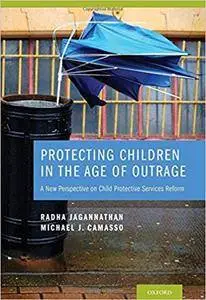Radha Jagannathan, Michael J. Camasso, "Protecting Children in the Age of Outrage: A New Perspective on Child Protective Services Reform"
2013 | pages: 267 | ISBN: 0195176960 | PDF | 1,3 mb
2013 | pages: 267 | ISBN: 0195176960 | PDF | 1,3 mb
This book proposes what, to many professionals in the child welfare field, will appear a radically different explanation for our society's decisions to protect children from harm and for the significant drop in substantiated child abuse numbers. At the center of this conceptual and analytic approach is the contention that social outrage emanating from horrific and often sensationalized cases of child maltreatment plays a major role in CPS decision making and in child outcomes. The ebb and flow of outrage, we believe, invokes three levels of response that are consistent with patterns of the number of child maltreatment reports made to public child welfare agencies, the number of cases screened-in by these CPS agencies, the proportions of alleged cases substantiated as instances of real child abuse or neglect, and the numbers of children placed outside their homes. At the community level, outrage produces amplified surveillance and a posture of "zero-tolerance" while child protection workers, in turn, carry out their duties under a fog of "infinite jeopardy." With outrage as a driving force, child protective services organizations are forced into changes that are disjointed and highly episodic; changes which follow a course identified in the natural sciences as abrupt equilibrium changes. Through such manifestations as child safety legislation, institutional reform litigation of state child protective services agencies, massive retooling of the CPS workforce, the rise of community surveillance groups and moral entrepreneurs, and the exploitation of fatality statistics by media and politicians we find evidence of outrage at work and its power to change social attitudes, worker decisions and organizational culture. In this book, Jungian psychology intersects with the punctuated equilibrium theory to provide a compelling explanation for the decisions made by public CPS agencies to protect children.
My Link



